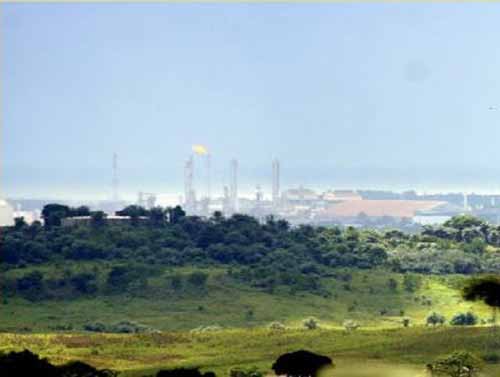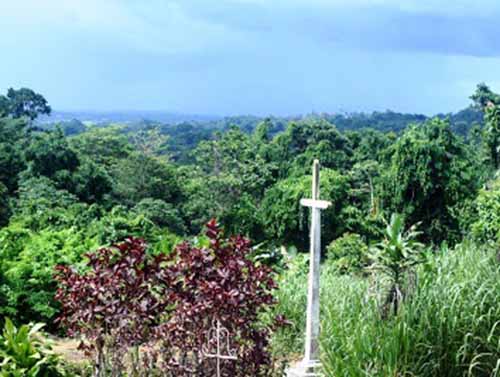

Tortuga, named after the multitude of turtles (morocoys) which roamed the landscape, is a small village approximately 10 sq. km in size. It was well-known as a thriving agricultural community with several groups contributing to its economic development.
This region was settled by a diverse group such as white and coloured Frenchmen who came generally after the 1783 Cédula de Población. They fled to Trinidad from Grenada after bitter fights with the British. The Cédula de Población also encouraged Roman Catholics of friendly nations to take up land grants in Trinidad. (N.B. Trinidad became a British colony in 1797). Many French settlers continued to move to Trinidad even under British rule and Trinidad became a French Creole dominated society although, we were never a French colony officially under French rule.
The French were noted for successfully cultivating high quality cocoa on the fertile soils of the Montserrat Hills. They soon began to dominate the trades as well as “King Cocoa” from the 1860s to 1880s. They also made significant contribution to the parish of OLM as priests and benefactors.
Following emancipation, many freed men squatted in the high woods of Tortuga and environs as they could not legitimately purchase land. Peons (a racial admixture of Amerindian, Spanish and African who migrated from Venezuela, the Main), formed a significant part of the population after 1850. They contributed labour, including skilled labour, on the cocoa estates.
The peons came mainly from the Cumana Province of Venezuela where verdant acres of coffee and cocoa were cultivated on the fertile soils of areas such as Yaguaraparo. Other Peons who worked as labourers formed part of the peasant population. A census of 1891 listed 142 Venezuelan immigrants in the Montserrat region of the Central Range.
The peons generally used the term “Spanish” to define themselves regardless of the diversity of their racial composition. They were largely Roman Catholic and Spanish speakers.
The everyday lifestyle of the peons of Montserrat is evident in the writings of Eusebio Valerio. He was born in Tortuga in 1880. His parents were Jose Tiburcio Valerio and Elenore Valerio. His parents were both native Trinidadians. His father was of Caucasian (Spanish) and Amerindian descent and his mother was African- Carib. Valerio’s grandparents had emigrated from Venezuela in the early nineteenth century and settled in Tortuga. Valerio’s father cultivated a cocoa plantation on a contractual basis until he died in 1895. Valerio was sent to a school run by Mr. Louis Mc Carthy, two miles away at Hardbargain.


Tortuga’s early history is also associated with the presence of the Capuchin monks who arrived from Spain with a mandate to spread Christianity throughout the region.
After 1867, Governor Arthur Gordon elevated Montserrat to ward status and Robert Mitchell was appointed Warden. Mitchell regularised the squatting problem by setting prices for occupied lands and forcing squatters to pay or be ejected. He also established two villages, one with a church and the other containing the warden’s residence, office, the police station and a school.
Traditionally an agricultural community, Tortuga’s landscape is no longer filled with extensive acreages of sugar cane, cocoa and bananas. While agriculture is still practised, the afore-mentioned cash crops have been replaced mainly by vegetables. This small rural community with a population of less than a thousand is mainly of East Indian and African descent. It remains a close-knit community, comprising mainly Christian and Hindu families with both Catholics and non-Catholics participating in parish events, particularly the annual Harvest and Family Day.
The church was built by priest and architect Fr Marie Jules Dupoux in 1878 and blessed on December 24th 1878. It was named after the Montserrat Hills on which it stands, in the village of Tortuga, Trinidad and Tobago. A name given by the Spanish settlers who named the area after the Montserrat Mountains of Catalonia in the region of Barcelonia, Spain.
This Roman Catholic Church also houses a Shrine to Our Lady of Montserrat also known as the Black Virgin, which was built by a Spanish Saint Maker in Spanish Colonial Art Style. Our Lady is located in a side Chapel reserved for her veneration. Pilgrims come from all parts of Trinidad and Tobago to pray before her, beseeching favours.
Harvest and Family Day celebrating the feast of Our Lady of Montserrat is held each year on the Sunday closest to September 8th and is attended by hundreds of pilgrims from all over Trinidad and Tobago in dedication to Our Lady.
The Church experienced two major disasters, an earthquake in 1954 and Tropical Storm Alma in 1974, thus causing major damages to its structure and contents. By 2004, the church was fully restored and still retains the original French paintings and 19 statues of saints donated over the years by the wealthy cocoa plantation owners, giving it its other name: “The Church of Many Saints.” Beautiful stained-glass windows bought in France over 100 years ago adorn the three altars. The Stations of The Cross which are over 150 years old, still have their inscriptions written in French, are hand painted on tin, and mounted in beautiful frames made of teak.

